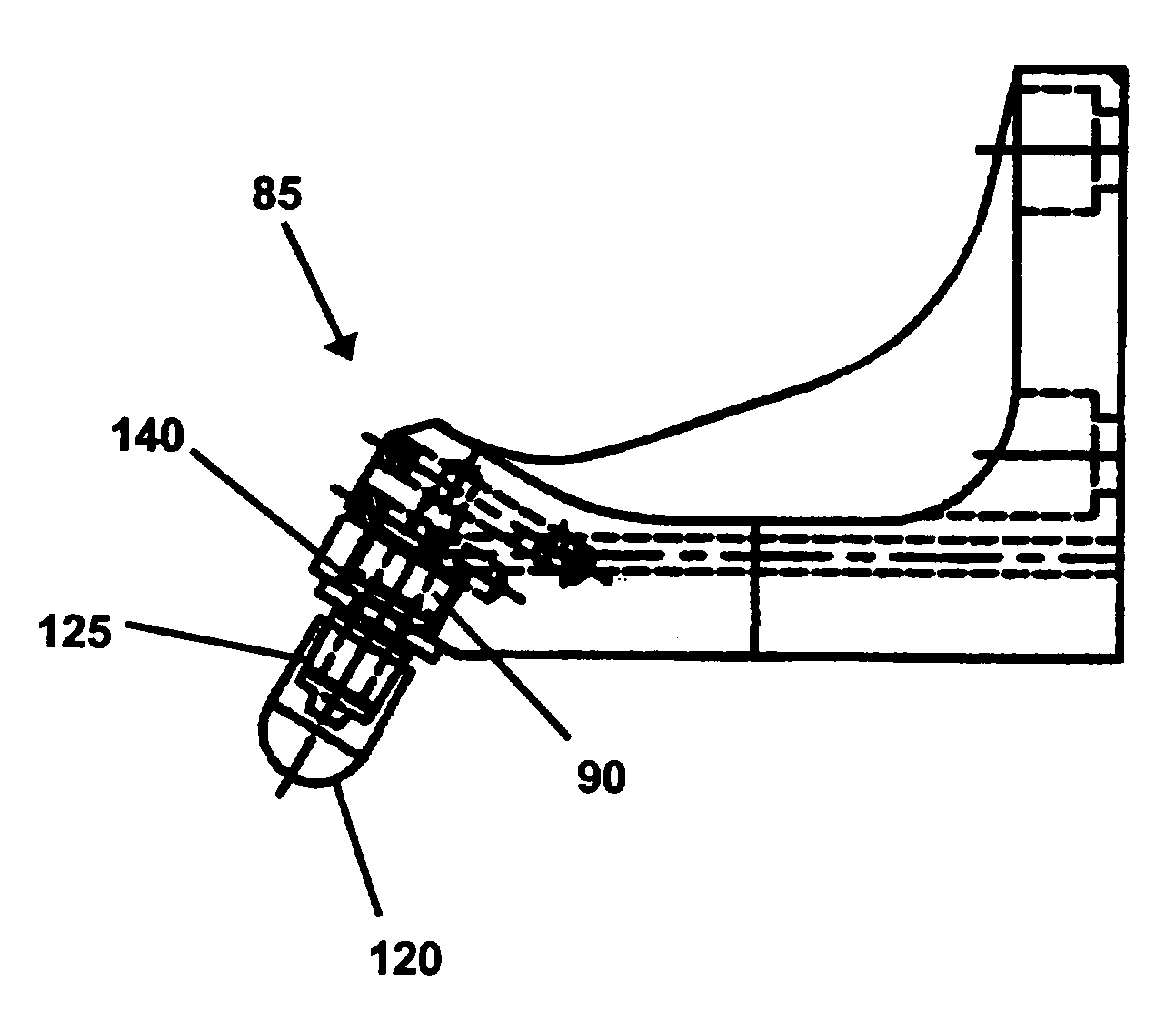Connecting adapter for weld electrode
a technology of connecting adapters and weld electrodes, which is applied in the direction of electrode features, mechanical equipment, manufacturing tools, etc., can solve the problems of degradation of electrodes, wear and/or damage of various copper components of typical resistance welding devices, and wear and/or damage of weld electrodes during use, so as to facilitate quick and easy connection of weld electrodes, low cost replacement, and low cost
- Summary
- Abstract
- Description
- Claims
- Application Information
AI Technical Summary
Benefits of technology
Problems solved by technology
Method used
Image
Examples
Embodiment Construction
)
[0021]A portion of a known resistance welding device 5 without, and with a connecting adapter 30 installed thereto, can be observed by reference to FIGS. 1a and 1b, respectively. As can be seen, the visible portion of the welding device 5 includes a gun arm 10, to which is affixed a tip holder 15. The tip holder 15 is provided with a receiving cavity 20. The receiving cavity 20 is designed to receive a shank portion of a specialized electrode or, more commonly, the shank portion 25 of a connecting adapter 30. The receiving cavity 20 and the shank portion 25 of the electrode or connecting adapter 30 are tapered to facilitate their assembly. Generally, the fit of the shank portion 25 into the receiving cavity 20 is a tight force fit, with the malleability of the copper allowing for secure retainment.
[0022]In operation, the connecting adapter 30 is installed to the tip holder 15 by tapping on the adapter until the shank portion 25 thereof is sufficiently driven into the tip holder's r...
PUM
| Property | Measurement | Unit |
|---|---|---|
| length | aaaaa | aaaaa |
| conductive | aaaaa | aaaaa |
| perimeter | aaaaa | aaaaa |
Abstract
Description
Claims
Application Information
 Login to View More
Login to View More - R&D
- Intellectual Property
- Life Sciences
- Materials
- Tech Scout
- Unparalleled Data Quality
- Higher Quality Content
- 60% Fewer Hallucinations
Browse by: Latest US Patents, China's latest patents, Technical Efficacy Thesaurus, Application Domain, Technology Topic, Popular Technical Reports.
© 2025 PatSnap. All rights reserved.Legal|Privacy policy|Modern Slavery Act Transparency Statement|Sitemap|About US| Contact US: help@patsnap.com



